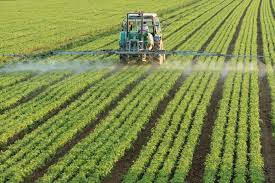The Importance of Water Conservation Technologies
Water is a precious resource that is essential for all life on Earth. With increasing global population and climate change impacting water availability, the need for effective water conservation technologies has never been more urgent.
Smart Irrigation Systems
One key technology in water conservation is smart irrigation systems. These systems use sensors and weather data to optimise watering schedules based on actual plant needs and environmental conditions. By reducing water wastage from overwatering, smart irrigation systems help conserve water while promoting healthy plant growth.
Rainwater Harvesting
Rainwater harvesting is another effective technology for conserving water. By collecting rainwater from rooftops and other surfaces, this method reduces reliance on mains water supply for non-potable uses such as watering gardens, flushing toilets, and washing vehicles. Rainwater harvesting not only conserves water but also helps reduce stormwater runoff and flooding.
Greywater Recycling
Greywater recycling involves treating wastewater from sources like sinks, showers, and washing machines for reuse in activities that do not require potable water. This technology helps reduce the strain on freshwater resources by providing an alternative source of water for tasks like irrigation or toilet flushing.
Drip Irrigation Systems
Drip irrigation systems deliver water directly to the roots of plants in a slow and precise manner. This targeted approach minimises evaporation and runoff compared to traditional sprinkler systems, resulting in significant water savings. Drip irrigation is especially beneficial for agriculture where efficient water use is crucial.
Conclusion
Water conservation technologies play a vital role in mitigating the effects of water scarcity and ensuring sustainable use of this precious resource. By implementing innovative solutions such as smart irrigation systems, rainwater harvesting, greywater recycling, and drip irrigation systems, we can collectively contribute to preserving our planet’s limited freshwater supplies for future generations.
Exploring Water Conservation: Technologies, Techniques, Devices, and Innovations
- What are the conservation technologies for water?
- What are the water conservation techniques?
- What is a water conservation device?
- What are the innovations in water conservation?
What are the conservation technologies for water?
When considering conservation technologies for water, several innovative solutions come to the forefront. Smart irrigation systems stand out as a key technology, using sensors and data to optimise watering schedules and reduce water wastage. Rainwater harvesting offers another effective method by collecting rainwater for non-potable uses, lessening reliance on mains water supply. Greywater recycling is also impactful, treating wastewater for tasks like irrigation or toilet flushing. Additionally, drip irrigation systems deliver water precisely to plant roots, minimising evaporation and runoff. These technologies collectively contribute towards sustainable water use and conservation efforts in various sectors, demonstrating the importance of embracing innovative solutions to address water scarcity challenges.
What are the water conservation techniques?
Water conservation techniques encompass a variety of strategies and technologies aimed at reducing water wastage and promoting efficient use of this vital resource. Some common water conservation techniques include implementing smart irrigation systems that adjust watering schedules based on real-time data, adopting rainwater harvesting to collect and store rainwater for non-potable uses, recycling greywater from household activities for irrigation or flushing toilets, and utilising drip irrigation systems that deliver water directly to plant roots. By incorporating these techniques into daily practices and infrastructure development, individuals and communities can contribute to sustainable water management and help safeguard water supplies for future generations.
What is a water conservation device?
A water conservation device is a tool or system designed to reduce water usage and promote efficient water management. These devices come in various forms, such as low-flow showerheads, dual-flush toilets, faucet aerators, and smart irrigation controllers. By incorporating water conservation devices into homes, businesses, and public spaces, individuals can minimise water wastage without compromising on functionality or convenience. These innovative technologies play a crucial role in sustainable water conservation efforts by helping to preserve freshwater resources and reduce the environmental impact of excessive water consumption.
What are the innovations in water conservation?
In the realm of water conservation technologies, innovations continue to drive progress towards more sustainable practices. From the development of smart irrigation systems that tailor watering schedules to specific plant needs, to the implementation of rainwater harvesting techniques that capture and reuse precipitation, there is a wide range of cutting-edge solutions available. Additionally, advancements in greywater recycling and drip irrigation systems have revolutionised how we approach water management, offering efficient ways to reduce water wastage and promote environmental stewardship. These innovations not only address the pressing issue of water scarcity but also pave the way for a more water-efficient future where conservation is at the forefront of our collective efforts.
